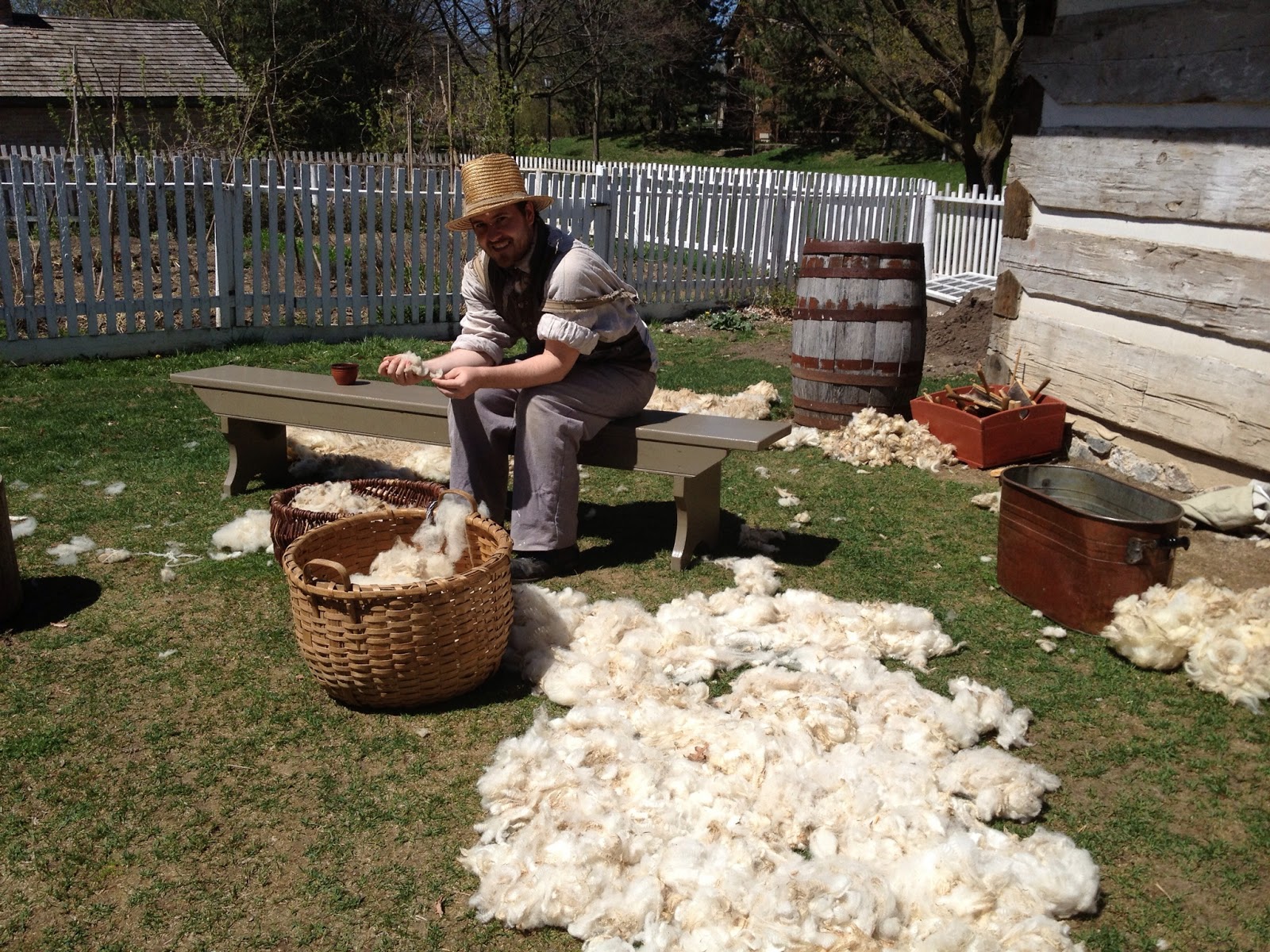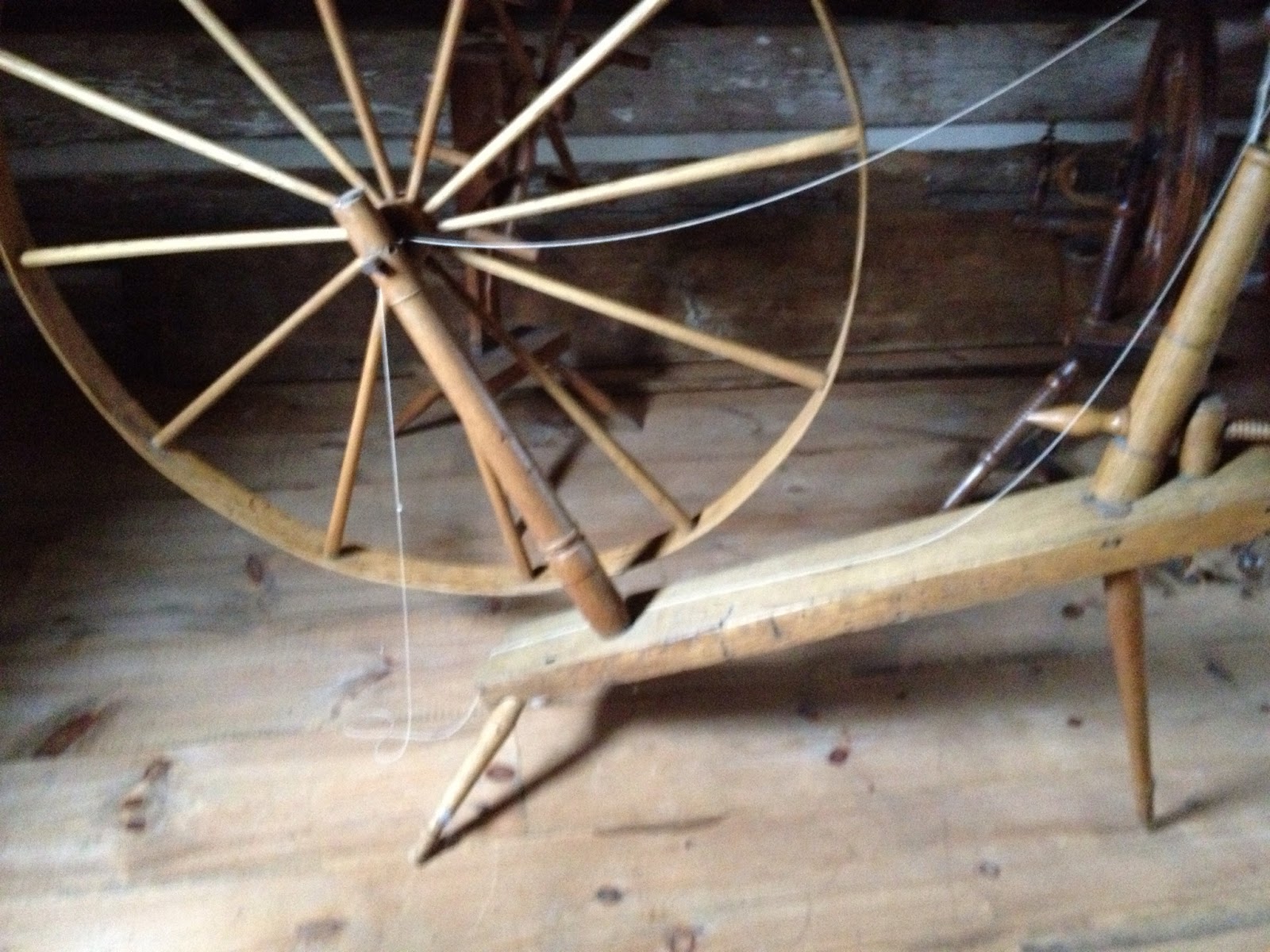I thought it might be nice if I posted a few pictures from May 4 and 5th since these are the types of things that fill my weekend endeavours when I am not researching, writing or teaching. I love living history interpretation for its sense of seasonality--what is interpreted is what [potentially] could/would have been done at any particular time of the year.
If this sounds confusing, look at it this way: today, in the 21st century we are pampered and spoiled insofar as we can buy just about any fresh produce we want to in the stores--regardless of whether or not it is in season e.g. strawberries, lettuce or tomatoes are now available in the store all year round. They are NOT available out of our northern gardens in the winter as many of our gardens are covered in snow! You get the idea.
This past weekend at the museum, Joseph Schneider Haus, we hosted a spinning and weaving competition with local guild members and as staff, we were busy with other seasonal pursuits: shearing sheep (well we didn't do that but had guest farmers in who did), processing fleece into wool and even baking some cookies! The weather was absolutely spectacular!
Once the sheep arrived, it was time to get the shearing underway:
I am told that the best way to shear a sheep is to put it into a sitting position. This way there is more control for the person shearing and less chance of a mishap for the sheep if it tries to wriggle away from the shears.
Mission accomplished!
Hannah and I surveyed the results. A lovely fleece and full of wonderful lanolin. (Surprisingly, also rather "clean" compared to others that I have seen).
I know what to do with this one! I'm taking it home to process....In the meantime, Kyle and some other staff members and Junior Interpreters will process one of the other fleeces that we have.
Elsewhere, in the wash house, spinning wheels were spinning....
And in the hearth of the wash house, a dye bath was bubbling....Nice work!!
Revealed, lovely spring colours, drying in the sun!
In the historic house, I was baking up some sunshine of my own on the woodstove. Sandheart cookies! Yum!
Above, our historic step stove with bake oven visible on the right at the top (the oval door). Step stoves were considered to be quite the innovation from cooking on the floor of an open hearth.
The Joseph Schneider family who once lived on this farm (see previous post) sheared thirty sheep each year. Since the fleece of one sheep provided enough wool to accomodate the clothing needs for one person (and there were ten people living in the house at that time), twenty fleeces could be sold for a small but lucrative profit.



















How do I contact someone who knows the great wheels in the photos in this blog and their provenance? One wheel appears in both photos and looks similar to great wheels from eastern Ontario. I would like to discuss this.
ReplyDeleteNot sure if you received my email reply or not. Feel free to email me directly here on the blog and I will try to answer your questions. If I don't know the answer I will try to find someone who does. Thanks for your interest!
DeleteHow do I email you? Did not receive yours.
ReplyDeleteThe wheel of interest has tear drop shaped feet. The post supporting the accelerating spindle assembly has a flare or lip at the top of it. Both the wheel support post and spindle support post have fine scribed lines encircling them in pairs or triplets as decorative elements. The maker may have stencilled his name on the inside of the band of the wheel or the top of the base. The ends of the base have pie crust edging created by filing semi circles with a round file along the edge between top face and end faces of the base. How well does my description of the same wheel in two of your blog photos match reality? If you need a picture to compare to go to www.spwhsl.com and bring up the current issue (July 2013) first article.
May I use your photo following the text "Elsewhere, in the wash house, spinning wheels were spinning...." for a slide presentation in Kemptville, ON on Oct 8th to the North Grenville Historical Society about Horton Row and his wheels if I credit Joanna Rickert Hall - Wooley Wonders blog?
ReplyDeleteI would be honoured....I'm afraid that I have no way to contact you as I don't have an email address for you. The credit should probably be Joanna Rickert-Hall's blogpost 'Woolley Wonders" on her blog: logschoolhouse.blogspot.ca
DeleteThanks Gordon for the kind mention!
Thank you! Your call reached the correct number. Will be in touch after I get past Wednesday.
Delete